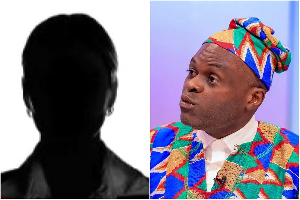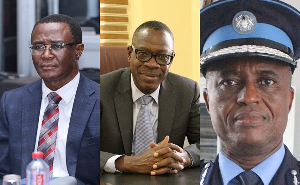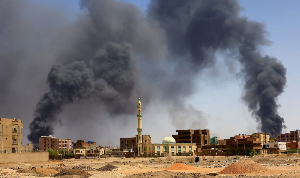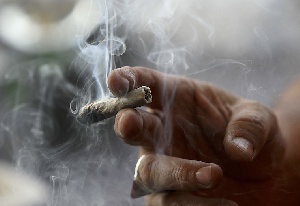Opinions of Thursday, 30 May 2013
Columnist: Appiah-Kubi, Kojo
Ghana’s economy moving in circles
Kojo appiah-kubi, phd
At independence in 1957 not only was Ghana thought to lead the way for African political liberation but was also to be developed into a model to show the world that the black man is capable of ruling himself. With the desire to ‘wrestle the command¬ing heights of the economy from foreigners’, who then con¬trol¬led the economy, the first post colonial government developed and implemented a series of the development plans on the back of gargantuan increases in government expenditure with large import content.
The results of these developments were steep rises in budget deficits, price levels and foreign indebtedness as well as massive declines in foreign reserves and economic growth. Thus by the mid sixties annual inflation exceeded 20% whilst the fiscal budget deficit rose to a height equiva¬lent to about 6% of GDP. The country recorded its first negative economic growth rate of about 5.1% since indepen¬dence in 1966.
These developments marked the beginning of Ghana’s movement in “circles”, whereby various successive governments come to power on the back of massive criticisms of economic failures of previous governments. They then promise to achieve economic stabilization necessary for sustained economic growth and poverty reduction, but end up achieving very little positive gains for the country. They also marked the subsequent introduction of structural adjustment programmes, austerity budgets, liberalization and stabilization programmes in Ghana, and deepened dependency on the Breton Woods Institutions. And that is what all subsequent governments since the sixties have taken the nation through but with achieved mixed results.
The Acheampong, SMC I and II regimes, for instance, assumed power in the seventies on the back of rising prices, deteriorating trade and budget balances, declining foreign exchange reserves, stagnating economic growth, etc., which they assigned to the economic mismanagement of previous regimes. Contrary to the promise of redeeming Ghana from its economic woes, the Acheampong’s National Redemption Council rather sent the economy through a serious economic decay. The economy saw an annual contraction in per capita GDP by more than 3%, in industrial output by 4.2% and in agricul¬tural output by 0.2% between 1970 and 1982. The annual average rate of inflation rose from single-digit in the early seventies to peak 121.2% in 1977, while the fiscal deficit levelled off at 10.9% of GDP in the same year.
Then came Rawlings Provisional National Defence Council with the promise to defend the nation against economic mismanagement. The regime introduced dramatic changes in the exchange rate, fiscal, monetary, privatisation, and trade policies that brought increased liberalisation in the economy. The economy made some initial gains, which could, however, not be sustained after a brief period of economic recovery. Hence at the time Ghana transitioned from military to democratic rule in 1992 the macro-economic environment was fast deteriorating and the nation was back to square one. Narrow and broad fiscal balances, for instance, recorded deficits of about 3.4% and 10.7% of GDP respectively in 1992. Annual inflation rate rose to average 39.5% between 1983-1992. The total public debt jumped from $2.9 billion in 1983 to $4.3 billion in 1992, with both trade and current account balances showing persistent deficits and worsening trends.
These movements of five steps forward four steps backwards have continued unabated since the return to civilian regime in 1992, with the economic performance having been closely associated with cycles of stabilization programmes; austerity budgets; deteriorating current account and fiscal balances; rising indebtedness and prices; and deteriorating macro-economic environment. As a result of these developments the actual GDP growth performance has been much lower than the predicted potential of the country.
Between 1992-1995 under the NDC I, for instance, the budget balance deteriorated at an annual average of –0.62% of GDP. The rate of deterioration increased further to annual average of –6.43% of GDP during NDC II (1996-2000). The public debt equally ballooned successively from an initial level of $4.2 billion in 1992 to $7.8 billion in 2000. The inflation and cedi-dollar depreciation rates rose to hit a peak of 40.5% and 49% respectively.
When the NPP assumed power in 2001 it castigated in its first budget the previous NDC government for having “...failed systematically to meet performance benchmarks and policy requirements agreed upon”. Despite its promise “...to put together a realistic action programme for attaining the national quest to re-establish macro-economic stability and re-establish credible and sustainable policy framework for co-operation and development”, the NPP regime also fell prey to moving in economic circles. Indeed it did make some initial gains, which it could not sustain over time. The budget deficit, which it brought down to an annual average of -4.1% of GDP during 2001-2004 rose again during 2005-2008 to -4.5% of GDP. Similarly the price levels rose to double digits with the current account balance, cedi depreciation rate, and foreign exchange reserves also assuming deteriorating trends. The public indebtedness finished off at $7.9 billion in 2008 higher than in 2000 under the NDC despite huge debt reliefs from HIPC.
In 2009 the new NDC led government, in its first budget statement, described the then economy of Ghana as having being rundown by the previous NPP administration. The then President Atta Mills promised Ghanaians in his first state of the nation address: “Our administration will build a robust economy and address the challenges which the private sector faces in investing, growing and expanding”. He then assured Ghanaians: “This is the beginning of the rescue plan for building a better Ghana”.
After 4 years of implementation of the supposed rescue plan the fundamentals of economic situation and predicament have by all indications worsened. The economy is currently weaker and more fragile than ever before. The fiscal deficits have grown larger (from ¢2.5 billion to ¢8.7 billion and running at an annual average of 7.2% of GDP during 2009-2012). The inflation rate managed to stay in single digit for some two years but remained higher than expected. The national debt stock ballooned to unprecedented levels; from ¢9.5 to ¢33.5 billion in 2009-2012, an annual increase of ¢6 billion. The depreciation in the value of the Cedi over the four year NDC era exceeded that of eight years of NPP. The current account deficit has grown from $3,473.50 million in 2008 to $5,179.29 million in 2012.
Despite the apparent boost in the country’s economic potential with a new oil find and high dividends from the country’s political stability, the reigning high prices of its major exports including cocoa and gold, the long-term economic performance of the economy of Ghana continue to remain below its potential. Ironically the economy is currently much weaker and more fragile than ever before. The macro-economic environment appears to have worsened, particularly, since the return to civilian regime in 1992. The movement of the economy in circles and deterioration of macro-economic environment have indeed assumed increasing speed accentuated by unbridled fiscal indiscipline during years of general elections. These movements, whose zenith always coincides with the nation’s general elections, only entrench a pattern of a "4-year political economy cycle" of fiscal indiscipline which is not healthy for the development of the country.














